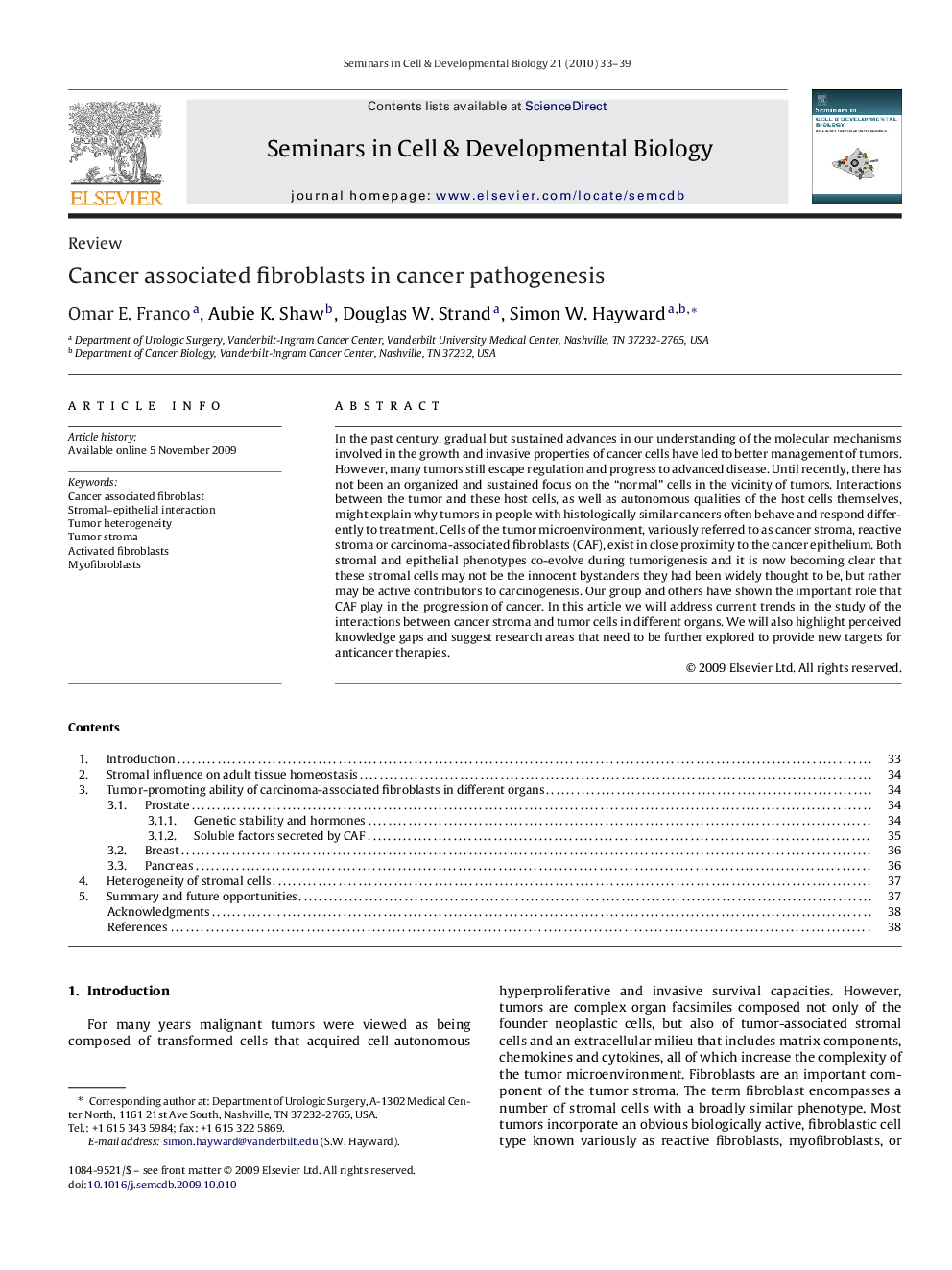| Article ID | Journal | Published Year | Pages | File Type |
|---|---|---|---|---|
| 10959262 | Seminars in Cell & Developmental Biology | 2010 | 7 Pages |
Abstract
In the past century, gradual but sustained advances in our understanding of the molecular mechanisms involved in the growth and invasive properties of cancer cells have led to better management of tumors. However, many tumors still escape regulation and progress to advanced disease. Until recently, there has not been an organized and sustained focus on the “normal” cells in the vicinity of tumors. Interactions between the tumor and these host cells, as well as autonomous qualities of the host cells themselves, might explain why tumors in people with histologically similar cancers often behave and respond differently to treatment. Cells of the tumor microenvironment, variously referred to as cancer stroma, reactive stroma or carcinoma-associated fibroblasts (CAF), exist in close proximity to the cancer epithelium. Both stromal and epithelial phenotypes co-evolve during tumorigenesis and it is now becoming clear that these stromal cells may not be the innocent bystanders they had been widely thought to be, but rather may be active contributors to carcinogenesis. Our group and others have shown the important role that CAF play in the progression of cancer. In this article we will address current trends in the study of the interactions between cancer stroma and tumor cells in different organs. We will also highlight perceived knowledge gaps and suggest research areas that need to be further explored to provide new targets for anticancer therapies.
Keywords
Related Topics
Life Sciences
Biochemistry, Genetics and Molecular Biology
Cell Biology
Authors
Omar E. Franco, Aubie K. Shaw, Douglas W. Strand, Simon W. Hayward,
